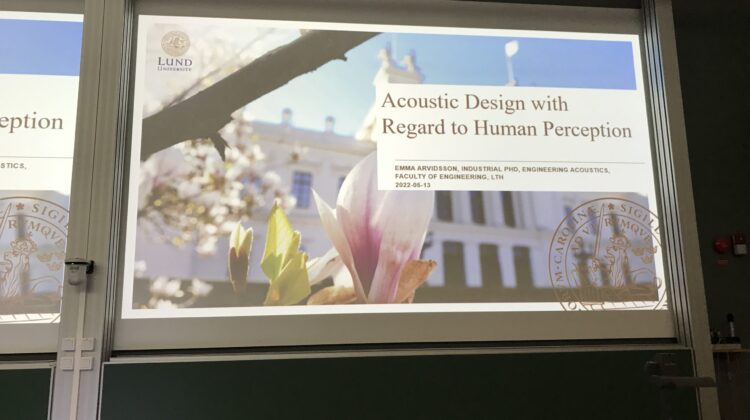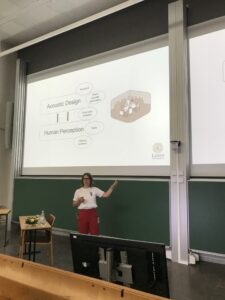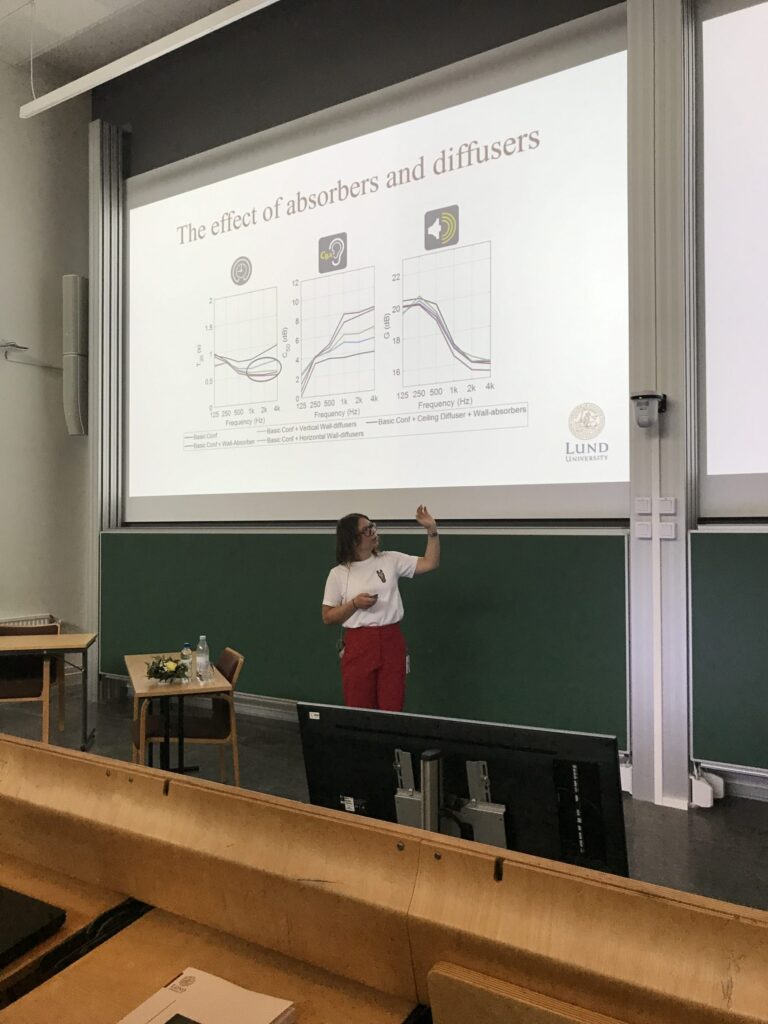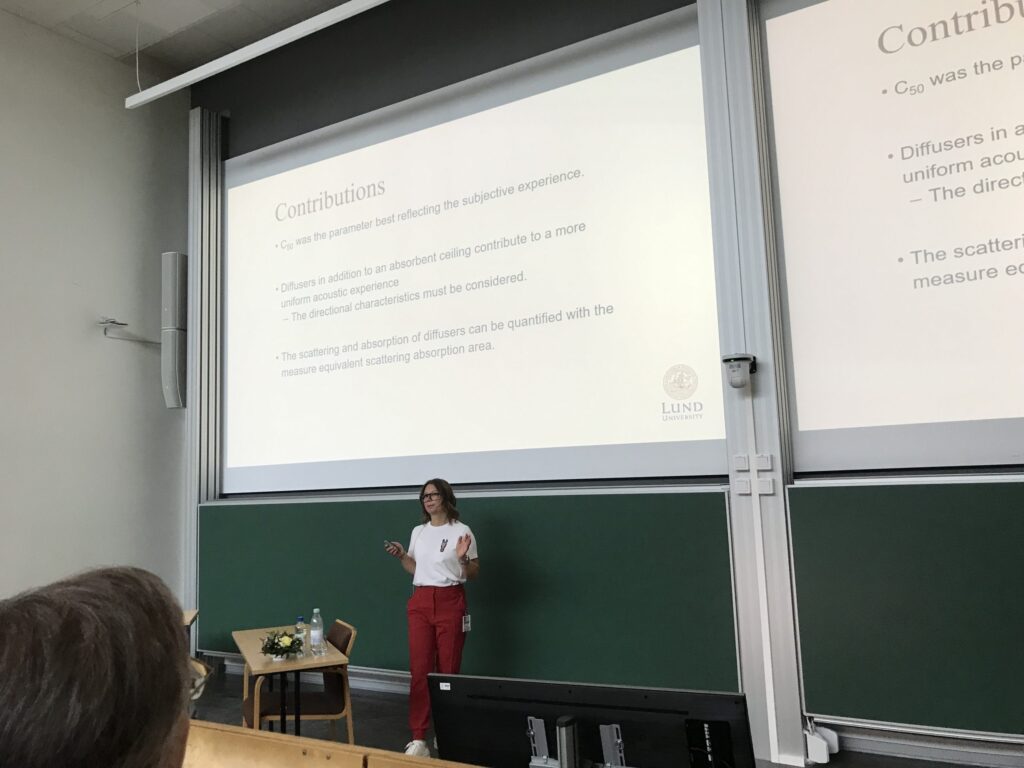

Friday the 13th of May Emma Arvidsson (EA) did her Ph.D. dissertation at Lund’s University (Sweden) under the title ‘Acoustic Design with Regard to Human Perception’.
Acoustic design of Ordinary Public Rooms
From many years of research, we know that ordinary public rooms (classrooms and offices) where complex tasks such as learning or following long chains of thought are performed require a good acoustic environment. EA chose to study these facilities for 4 years taking both objective and subjective perspectives into account.
Acoustic Descriptors
During her work, EA performed experiments in a classroom mock-up using different configurations of absorbers and diffusers, and she spend a lot of time looking into the effects on the room acoustic parameters reverberation time, T20, speech clarity, C50, sound strength, G. Very often, acoustic measurements stand alone in projects like these but EA did a great job including subjects into her work and the subjective experience of the different configurations was therefore investigated.

EA evaluated people’s experience of uniformity and preferences of speech (from listening tests and analyzing ratings). EA also worked on the objective perspective and a calculation model was evaluated with a focus on its sensitivity in quantifying the scattering from objects, an aspect that can greatly affect the acoustic environment.
Results
The results of the study showed that an absorbent ceiling is a good start! But EA also showed that additional treatment is needed to create a supporting sound environment for the activities. In many studies, reverberation time is evaluated and connected to people’s preferences of sound, but EAs Ph.D. showed that sound was best reflected in C50, with increasing values being more appreciated.

Read more articles on Acoustic Bulletin about Emma’s work here and here.
To download Emma’s thesis, please click here.

